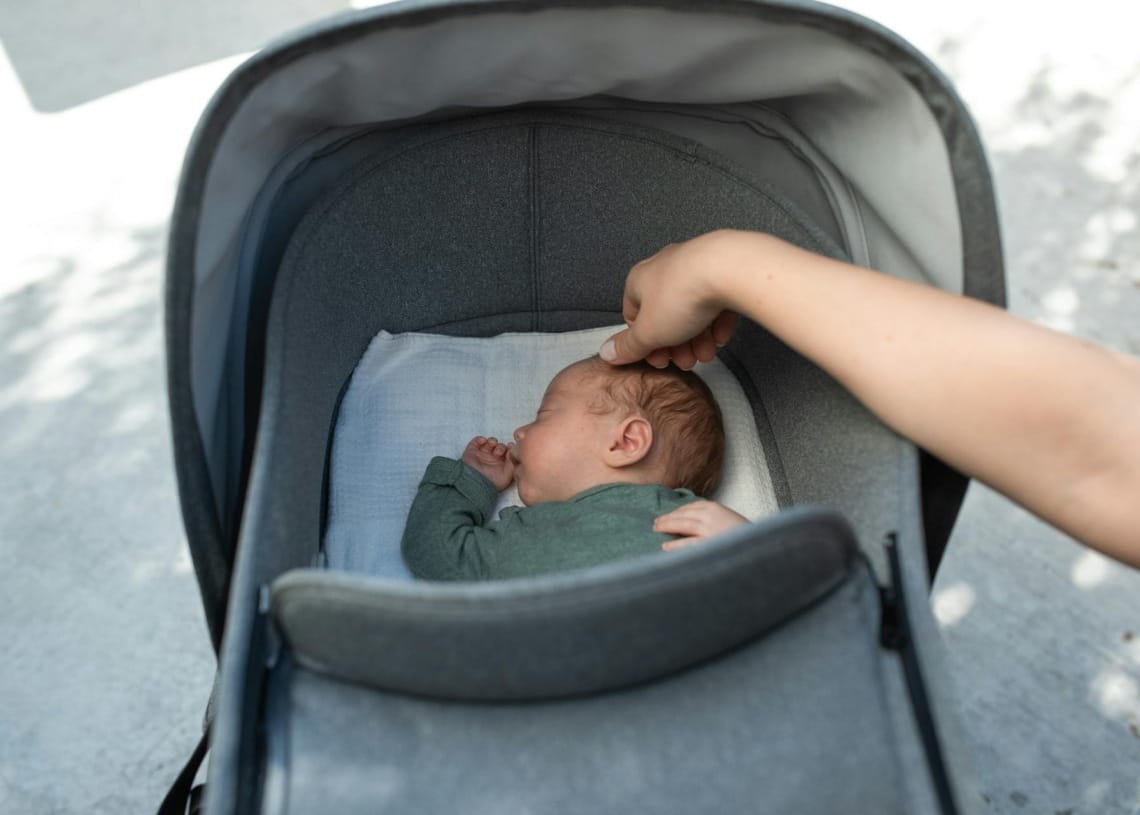Becoming a new parent comes with countless questions—one of the most common being: When can I safely take my newborn outside for a walk?
The answer is good news: for most healthy infants, enjoying fresh air is not only safe—it’s beneficial.
Here’s everything you need to know before you step out with your baby.
Can I Take My Newborn Out Immediately?
Yes! Healthy newborns can typically go outside from day one, provided you take proper precautions.
While newborns have delicate immune systems, most pediatricians agree it’s safe to head outdoors with basic safety in mind.
Experts note that babies can go outside right away, as long as they’re healthy and protected.
There is no medical need to delay, and fresh air offers mood-boosting and vitamin D benefits.
In short: Once you’re home from the hospital, there’s no reason to feel “cooped up.” A gentle stroll is perfectly fine.
Why You Should Get Outside
Getting outdoors isn’t just okay—it’s recommended.
Outdoor exposure helps reduce stress, promote mental health, and strengthen bonds between parent and baby.
Even simple stroller rides stimulate sensory development, improve alertness, and help babies develop a sense of routine.
Many pediatricians and therapists encourage families to get out daily, even if it’s just for a 10-minute walk down the street.
It helps caregivers recover emotionally while providing a natural rhythm for the baby’s day.
Safety Checklist: What to Watch For
Immune System & Crowds
Although newborns can go out immediately, you should avoid crowded indoor spaces like malls or events for the first 6–8 weeks—until after their initial vaccinations.
This reduces the risk of exposure to viruses and harmful bacteria.
Instead, choose quiet areas like your backyard, a local park during off-hours, or peaceful neighborhood sidewalks for early walks.
Weather & Clothing
Dress your baby for the weather—but always add one extra layer than what you’re wearing.
That might mean a bodysuit and sleeper in cool weather, or a light onesie and sun hat in warmer months.
In colder weather, include mittens, socks, and a warm blanket.
Keep walk times short to avoid discomfort or overexposure to the elements.
In summer, use light clothing and avoid overdressing. Babies can’t regulate their temperatures like adults, so you must check them frequently for signs of overheating.
Sun Protection
Babies under 6 months old should not wear sunscreen.
Their skin is too delicate and sensitive to chemicals. Instead, keep them shaded using:
Wide-brimmed hats
Stroller sunshades
Light blankets draped over carriers (with airflow)
Once your baby reaches 6 months, you can begin using a small amount of pediatrician-recommended sunscreen on exposed areas.
However, shade is still your best friend.
Heat & Hydration
Avoid going out during peak sunlight hours (10 am–2 pm), especially on hot days.
High temperatures pose a risk of heat exhaustion and dehydration.
Your baby may not sweat much, so you must look for other signs of heat stress like:
Flushed skin
Unusual fussiness
Irritability or lethargy
Decreased wet diapers
In hot weather, increase breastfeeding or bottle-feeding sessions to help maintain hydration.
If you sense your baby is uncomfortable or overheating, head indoors immediately, remove excess layers, and cool them with a damp cloth.
Bugs & Insects
Insect bites may not seem like a big deal to adults, but they can be dangerous for infants.
Avoid walking in mosquito-heavy areas at dawn or dusk. For infants younger than 2 months, bug sprays aren’t recommended.
For older babies, only use pediatrician-approved insect repellents and keep skin covered with light clothing. A fine mesh stroller net can also help ward off insects.
Tools & Gear
When deciding between a stroller or baby carrier, both are great options. Each has its own benefits:
Stroller: Easier for longer walks and includes built-in sun protection.
Carrier: Keeps baby close and comfortable, especially for shorter walks or rough terrain.
Be sure the stroller or carrier meets safety standards and is appropriate for your baby’s size.
Always:
Keep baby’s face visible and airways clear
Ensure all buckles or harnesses are secure
Avoid using blankets that can slip over the face
Bring a fully stocked diaper bag, including:
Diapers and wipes
A change of clothes
Extra blanket or hat
Feeding supplies (bottle or snacks)
How Long Should Outings Be?
First walks should be short—around 20 to 30 minutes. Observe your baby’s cues during the outing. If they seem fussy or overstimulated, shorten the walk.
Once your baby becomes comfortable with daily strolls, you can gradually extend the time.
Many parents find that 30–60 minutes per outing is ideal.
Some families incorporate walks into their daily routine—morning and late afternoon strolls work best in warmer months.
When to Delay Going Outside
Although outdoor time is encouraged, certain situations call for a delay:
Premature infants or those with medical conditions should get pediatric clearance before going out.
Extreme weather—very hot, cold, or windy days should be avoided.
During illness outbreaks, such as flu or RSV season, steer clear of crowded parks or public places.
If your baby is ill, it’s best to keep them home and allow for rest and recovery.
Watch for local health advisories or air quality alerts that could impact newborn safety.
Emotional & Developmental Benefits
There’s more to an outdoor walk than fresh air—it also provides:
Mental stimulation: Babies observe trees, clouds, people, and sounds, which aids in brain development.
Circadian rhythm regulation: Exposure to natural light helps babies differentiate between day and night.
Improved mood: Being outside can calm a fussy baby and uplift caregiver spirits.
Bonding time: Walks create quiet moments of connection for parent and child.
If you’re recovering from birth or navigating early postpartum anxiety, a peaceful daily walk can work wonders for your emotional health too.
7. Expert Tips at a Glance
| Situation | What to Do |
|---|---|
| First Walk | Keep it short and choose a quiet, shaded location |
| Weather | Dress baby in layers and avoid temperature extremes |
| Hot Days | Walk early or late; keep hydrated and shaded |
| Sun Exposure | Use hats, canopies; avoid direct sunlight |
| Crowds | Avoid busy places until baby is vaccinated |
| Sick Season | Choose wide open spaces and avoid indoor public areas |
| Baby’s Comfort | Watch for fussiness, red cheeks, sweating, or drowsiness |
| Bug Safety | Avoid dusk/dawn; consider mesh netting for stroller |
| Gear Essentials | Bring diaper bag, feeding supplies, and extra clothes |
Summary: When & How Soon?
Here’s the quick answer:
How soon? Most newborns can go outside immediately after hospital discharge.
How often? Daily walks are beneficial—just keep an eye on the weather and your baby’s comfort.
Where to go? Quiet parks, shaded sidewalks, or a simple walk around your yard are all great.
What to avoid? Crowded indoor places, excessive heat, strong sun, and long outings at first.
Trust your instincts. You know your baby better than anyone. If they’re calm, alert, and well-dressed for the weather, you’re likely safe to go.
Final Thoughts
A gentle walk outdoors is one of the simplest and healthiest ways to bond with your baby in those first few weeks. With just a few precautions, you’ll both enjoy the benefits of nature, fresh air, and movement.
Whether it’s the neighborhood park, your garden, or a quiet sidewalk, stepping outside can become a daily ritual that nourishes both body and soul.
Your newborn is ready—and so are you.




























